Franky Strachan – 7 May, 2013
Leek is highly responsive to her surroundings. Her immediate environment permeates her expression, filtered by a remarkable application of colour. Her palette may in fact be considered a trademark, moving between triumphantly gaudy to irksomely celestial - it may also divide the crowds. In either case, the kitschy colours complement her increasing confidence with abstraction and art-historical quotation while keeping her work fresh.
One’s approach to writing about a retrospective exhibition is inherently different from that of other exhibitions. There is necessarily an overarching, often pressing, awareness that what is being viewed has already been accepted within the art world and, generally, is art-historically significant. Rather than walking into the gallery fresh to new-fangled works, therefore, one approaches as if it were a follow-up exercise, a presentation of what has been.
With Saskia Leek’s Desk Collection, the clarity which comes with hindsight is both intense and intentional. More than 50 paintings spanning the artist’s career from 1994-2012 are hung chronologically in chapter-like sections. Partitioned white walls and careful placing of labels set out formal and expressive shifts in the artist’s practice as the paintings gently progress from literal depictions to increasingly abstracted forms. The vast collection is thus digestible and accessible, with the viewer feeling that a pathway lies ahead.
The works are small, around A4 size, with few exceptions. Included is a two-metre caravan constructed from cardboard, and a collection of small birds carved from brightly coloured soaps. The three-dimensional works have appeal and presence but their significance here is isolated. Because they were produced (and reproduced) for specific shows, they do not appear to be typical. The focus is on her paintings.
Her exhibition begins with works which reflect the provincial and purposely awkward expressions of the ‘pencilcase painters’ , a group Leek was linked to soon after graduating from the Canterbury School of Fine Arts in 1992. Heavily influenced by American culture as transmitted through television, the first set of paintings examine what it is to be a young girl absorbing such popular entertainment from the floor of her teenage bedroom. These personal narratives appear like diagrammatic scrawls from an adolescent’s diary, bright colours and rambling text conveying the intensity of feeling which overwhelms the teenage psyche. Their absence of structure and spatial savviness is either ironic or irrelevant; in terms of Leek’s artistic practice, the cutesiness and insularity they convey will become an antithetical platform for future works.
After establishing a name for herself as a painter in the touring Hangover exhibition of 1995, Leek found herself adhering to the ‘pencilcase’ formula.1. She then began to work against the personal narratives for which she was known by replacing her own presence with storybook-like characters. The series Best Wishes depicts small illustrations like those you might find in Disney’s Little Golden Books, but with Leek emphasising their eerie edge. She surrounds the candy-coloured imagery with black paint, turning cute and frilly daydreams into psychobilly night-tales, or adds a splash of surreality to the folk story vocabulary. (One of my favourite images is the Egg-Egg-Eggman (2000) which is an egg carrying a spoon carrying an egg carrying a spoon…in a race that might well be situated in Wonderland).
When this show opened in Dunedin, Leek and curator Emma Bugden led a guided walk through the exhibition. Upon reaching this section, Leek said she felt uneasy being confronted by some of the works. I sympathise. Looking at paintings from years past must be like gazing upon old diary entries and, even if those entries refer to no specific occasion, there can be a feeling or familiarity which creeps up on you unsuspectingly. It might make you recoil in shock, and curiosity may be mistaken for approval.
From here on the works change. The artist begins to look to other paintings, rather than pop culture, as source material. We see her work transform into meditations of iconographical ‘types’. Taking the generic forms of still-life and landscape paintings which she had unearthed in second-hand stores, Leek started producing versions of familiar compositions - a rose, an open window, a lone blaue reiter-esque horse, a lake with mountains. The colours are muted as if faded in the sun, the picture plane flat as if the image were in its umpteenth reproduction and the subject found in postcards or on motel room walls. Leek said she was thinking of “faded footprints” when she made those works - “nostalgia, but not schmaltz”.
It is evident that Leek at this point became interested in painting itself - process and medium rather than content. A chalkier palette, fine brush-work, and a more unified sense of composition and structure became progressively more prominent.
On the opening day of the exhibition she spoke of her interest in the “wall-like structure of many paintings” and how she would polyurethane her works and sand them back to give the effect of the old prints from which she was working. This created a perfect contrast with Renaissance theorist Leon Battista Alberti and his treatise On Painting where he discussed how a painting should be treated as a window on the world; that a painting should be illusionistic and perspectival. 2.
When Leek moved to Auckland houses began to feature in her works - their cubic structures striking a chord. The titles went from being thoughtfully and specifically named (Self portrait as Sandra Dee (1995) or Coney Island Party (1997)) to being called Ninth House (2003) or Untitled I, II, II… She stopped thinking in terms of individual paintings and began thinking in terms of shows. She would name the series, and then create it, labelling them consecutively as they were made.
Leek is highly responsive to her surroundings. Her immediate environment permeates her expression, filtered by a remarkable application of colour. Her palette may in fact be considered a trademark, moving between triumphantly gaudy to irksomely celestial - it may also divide the crowds. In either case, the kitschy colours complement her increasing confidence with abstraction and art-historical quotation while keeping her work fresh. In the name of reinvention and investigation she begins to leave blank spaces suggestive of the houses she once painted. The drapery around the still-lifes turns cubic. Brushstrokes begin to extend on to the picture frame itself. Spatial play becomes prominent; there is less nostalgia and more conviction.
The exhibition, Desk Collection, is called that because Leek began her artistic career working at a desk. Initially for practical reasons, but eventually because it became something she was used to; this is why she works on such a small scale. To see them up on the wall owning a big white cube with their light brushstrokes and pastel hues must therefore for her be somewhat overwhelming. I had never seen Leek’s works in person before and as stand alone pieces I did not anticipate warming to them. However, upon recognizing this exhibition as an invitation to journey through her relationship with paint (and the art-world), I was, just quietly, blown away.
Franky Strachan
1. Please see Andrew Paul Wood’s article ‘The Pencilcase Painters’ http://eyecontactartforum.blogspot.co.nz/2007/12/pencilcase-painters.html, eyeCONTACT (blog), accessed 28 April 2013.
2. There are two early versions of this treatise. De pictura was written in Latin in 1435, and the more vernacular Della pittura was written in 1436.
Recent Comments
Franky Strachan
Hi John, The show starts with Hangover, rather than after it. The first works in the exhibition are indeed on ...
John Hurrell
Interesting that this show starts after Hangover. I would have thought the earlier vinyl paintings with their gurl gang themes ...
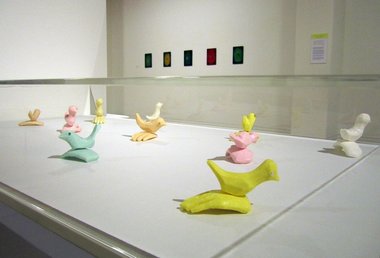
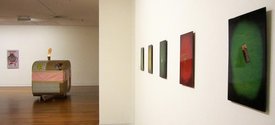
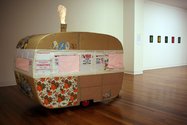

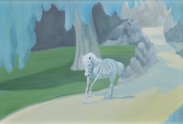
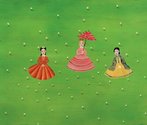
 Two Rooms presents a program of residencies and projects
Two Rooms presents a program of residencies and projects Advertising in this column
Advertising in this column
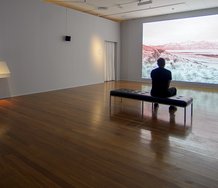
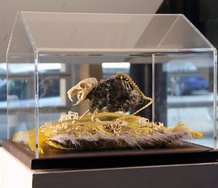
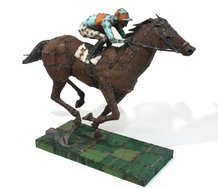
This Discussion has 2 comments.
Comment
John Hurrell, 9:20 a.m. 7 May, 2013 #
Interesting that this show starts after Hangover. I would have thought the earlier vinyl paintings with their gurl gang themes would make an amazing foil for the later work?
Franky Strachan, 11:10 a.m. 8 May, 2013 #
Hi John,
The show starts with Hangover, rather than after it. The first works in the exhibition are indeed on vinyl, and they mark Leek’s rise to prominence with that particular generation of Christchurch artists. I did not make this clear. You are right; her later works are all the more fascinating when taken in contrast to her figurative, autobiographical beginnings. She has undeniably moved far away from the ‘naïve’ (a troublesome term) teenage themed works which were exhibited in her early career and, perhaps owing to my own biases, I found the second half of Desk Collection to be where the real weight of the exhibition resides. The publicity shots, unfortunately, do not display Leek’s most recent paintings within which she toys with still-life compositions and Cezanne-inspired cubistic forms, but the shift from subject-oriented works to formal investigations really is noteworthy – particularly, I’d imagine, for those who saw Hangover in person, in 1995.
Participate
Register to Participate.
Sign in
Sign in to an existing account.